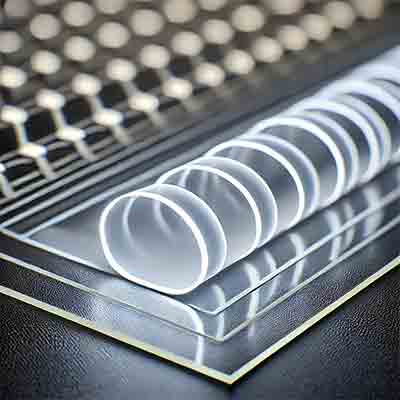I need glass with high optical clarity is essential for efficient light emission. Can you suggest a glass substrate?
Substrates for White Organic Light Emitting Diodes (WOLEDs)
Glass Wafers to Fabricate WOLEDs
A Ph.D candidate researching solar energy requested a quote for the following:
Reference #3712030 for specs and pricing.
Get Your Quote FAST! Or, Buy Online and Start Researching Today!
What Are White Organic Light Emitting Diodes (WOLEDs)?
White Organic Light Emitting Diodes (WOLEDs) are a type of OLED technology designed to produce white  light. OLEDs, or Organic Light Emitting Diodes, are a form of LED in which the emissive electroluminescent layer is a film of organic compounds that emit light in response to an electric current.
light. OLEDs, or Organic Light Emitting Diodes, are a form of LED in which the emissive electroluminescent layer is a film of organic compounds that emit light in response to an electric current.
WOLEDs specifically aim to generate white light by combining multiple organic materials that emit different colors. There are a few different methods to achieve this:
-
Stacked OLEDs: This method involves stacking different OLED layers, each emitting a primary color (red, green, and blue), to produce white light.
-
Single Emissive Layer with Multiple Emitters: This method uses a single emissive layer containing multiple emitters that each produce a different color. The combination of these colors results in white light.
-
Color Conversion Layers: This method employs a blue or ultraviolet OLED with a phosphorescent or fluorescent layer on top that converts the emitted light into white light.
WOLEDs have several advantages:
- Energy Efficiency: They are more energy-efficient compared to traditional incandescent or fluorescent lights.
- Flexibility: WOLEDs can be made on flexible substrates, allowing for innovative design possibilities in displays and lighting.
- Thin and Lightweight: They are thinner and lighter than traditional lighting systems, making them ideal for modern, sleek designs.
- High Color Quality: WOLEDs can provide a high Color Rendering Index (CRI), making colors appear more natural and vibrant.
Applications of WOLEDs include lighting solutions for homes and offices, as well as in display technologies for televisions, smartphones, and other electronic devices. Their ability to produce high-quality white light makes them a promising technology for a wide range of uses.
What Substrates are used to Fabricate White Organic Light Emitting Diodes (WOLEDs)?
The substrates used to fabricate White Organic Light Emitting Diodes (WOLEDs) are crucial for their performance, flexibility, and application. Common substrates include:
-
Glass: Traditional and widely used due to its excellent barrier properties against moisture and oxygen, which are critical for the longevity of the OLED materials. Glass provides a rigid and stable platform for WOLED fabrication.
-
Plastic (Flexible Polymers): Materials such as polyethylene terephthalate (PET), polyethylene naphthalate (PEN), and polyimide (PI) are popular for flexible OLED applications. These substrates allow WOLEDs to be used in bendable, foldable, and rollable displays and lighting solutions.
-
Metal Foils: Stainless steel and aluminum foils are used for their mechanical robustness and flexibility. Metal substrates also offer good barrier properties and are suitable for flexible WOLED applications.
-
Thin-Film Transistors (TFT) on Glass or Plastic: Used in active-matrix OLED displays, these substrates combine the benefits of glass or plastic with integrated electronic components to control each pixel individually.
-
Ceramic: Less common but used in specific applications where high thermal stability and mechanical strength are required.
Each substrate type offers different advantages:
- Glass: High transparency, excellent barrier properties, stability.
- Plastic: Flexibility, lightweight, durability.
- Metal Foils: Flexibility, robustness, good barrier properties.
- TFT on Glass/Plastic: High performance, pixel control in displays.
- Ceramic: High thermal stability, mechanical strength.
The choice of substrate depends on the intended application, whether it be for flexible displays, lighting panels, or high-performance display screens.
